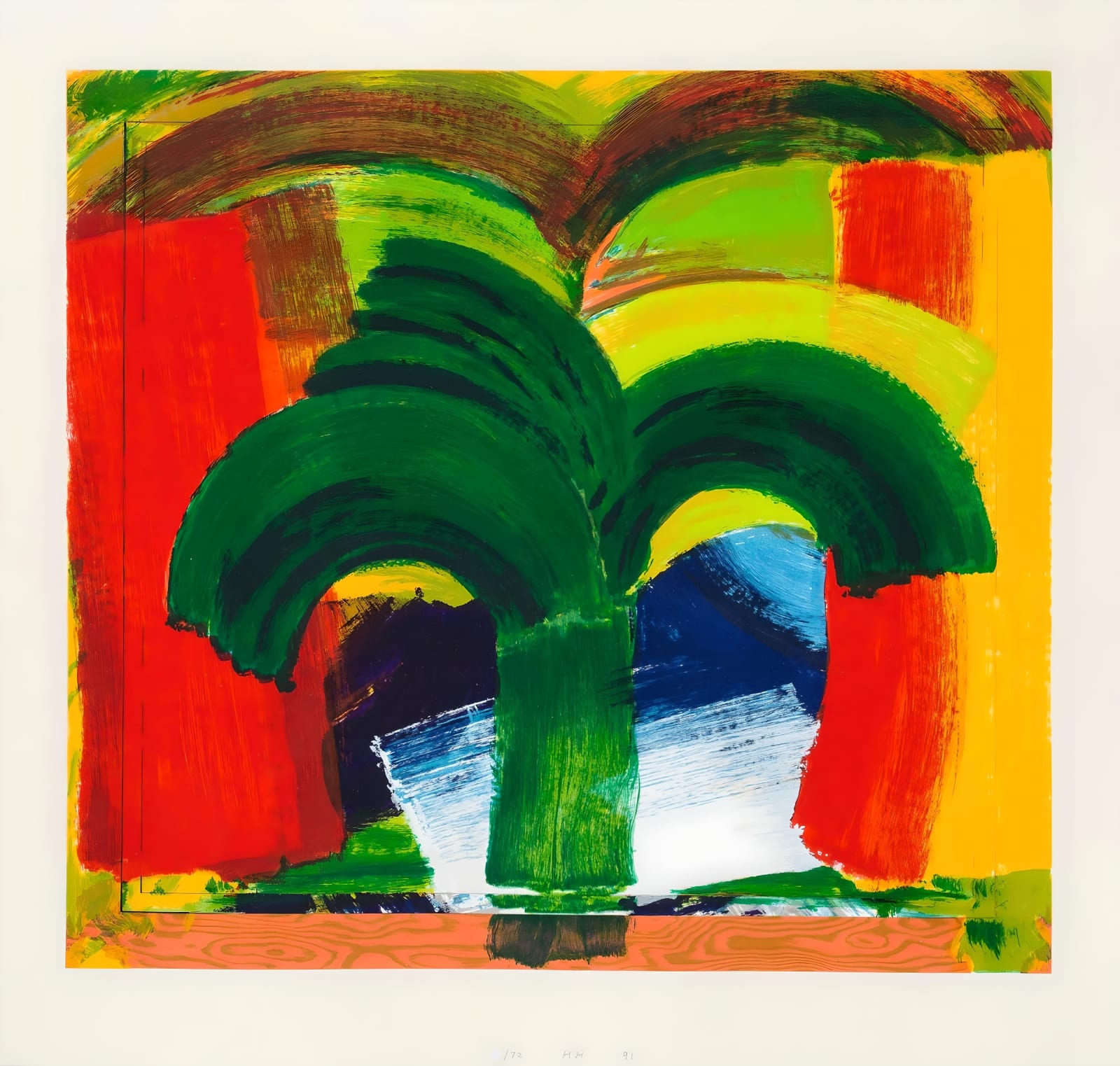Howard Hodgkin British, 1932-2017
In Tangier, 1991
Screenprint in colours
Signed HH in pencil and dated 1991 and numbered
Signed HH in pencil and dated 1991 and numbered
82 × 86 cm
© The Estate of Howard Hodgkin
£ 9,000 + ARR
Weitere Abbildungen
'In Tangier' belongs to a significant period in Hodgkin's practice when he developed a refined repertoire of marks—including stripes, arcs, sweeps, and dots—which he deployed with increasing sophistication. The work...
'In Tangier' belongs to a significant period in Hodgkin's practice when he developed a refined repertoire of marks—including stripes, arcs, sweeps, and dots—which he deployed with increasing sophistication. The work demonstrates his ability to distil complex memories and sensations into powerful abstract compositions that hover between representation and pure abstraction.
The culmination of a patient, deliberate process of building up layers of colour until achieving the desired emotional resonance, this artwork is a prime example of Hodgkin's ability to transform personal experiences into universal statements about memory, place, and emotion. Here, the frame becomes an integral part of the composition, and the brushstrokes of colour surge and flow emotionally across the surface. It showcases the artist's sophisticated understanding of colour, composition, and the expressive possibilities of paint while maintaining the delicate balance between revelation and concealment that characterised his mature style.
'In Tangier' exemplifies Hodgkin's unique position in British art history. While his contemporaries included Pop artists like David Hockney and Patrick Caulfield, Hodgkin carved out his distinctive path, creating emotionally invested abstractions when such approaches had largely fallen out of fashion. The piece conveys his ability to capture what Susan Sontag described as "the rueful shadow cast on all pleasures when they are framed, theatricalised even, as acts of memory."
The culmination of a patient, deliberate process of building up layers of colour until achieving the desired emotional resonance, this artwork is a prime example of Hodgkin's ability to transform personal experiences into universal statements about memory, place, and emotion. Here, the frame becomes an integral part of the composition, and the brushstrokes of colour surge and flow emotionally across the surface. It showcases the artist's sophisticated understanding of colour, composition, and the expressive possibilities of paint while maintaining the delicate balance between revelation and concealment that characterised his mature style.
'In Tangier' exemplifies Hodgkin's unique position in British art history. While his contemporaries included Pop artists like David Hockney and Patrick Caulfield, Hodgkin carved out his distinctive path, creating emotionally invested abstractions when such approaches had largely fallen out of fashion. The piece conveys his ability to capture what Susan Sontag described as "the rueful shadow cast on all pleasures when they are framed, theatricalised even, as acts of memory."
Join our mailing list
* denotes required fields
We will process the personal data you have supplied to communicate with you in accordance with our Datenschutz. You can unsubscribe or change your preferences at any time by clicking the link in our emails.





